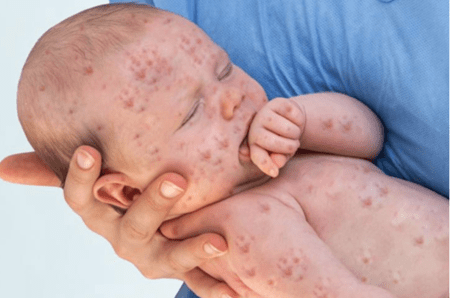27/01/2024
27/01/2024

NEW YORK, Jan 27: In response to a global surge in measles transmission, the Centers for Disease Control and Prevention (CDC) has issued a warning to clinicians about the escalating risk of measles cases and outbreaks. The CDC's outreach message, titled "Stay Alert for Measles Cases," emphasizes the importance of vigilance in identifying potential cases.
The CDC has urged clinicians to be on the lookout for patients presenting with a rash accompanied by a fever and other measles symptoms, especially those who have recently traveled to countries experiencing ongoing measles outbreaks. Between December 1, 2023, and January 23, 2024, the US has reported 23 confirmed measles cases, including seven cases directly imported by international travelers and two outbreaks with more than five cases each. Notably, most cases were observed in unvaccinated children and teenagers.
Measles outbreaks in the US often stem from unvaccinated or under-vaccinated residents who contract the infection abroad and subsequently transmit it to pockets of unvaccinated or under-vaccinated communities upon their return.
Globally and in the US, vaccination rates against measles, administered through the measles, mumps, and rubella vaccine (MMR), have declined due to disruptions in healthcare caused by the pandemic and vaccine hesitancy fueled by misinformation.
"The increased number of measles importations seen in recent weeks is reflective of a rise in global measles cases and a growing global threat from the disease," warns the CDC's outreach message.
According to data from the World Health Organization (WHO), the European region witnessed a staggering 40-fold increase in measles cases in 2023 compared to the previous year, totaling over 42,200 cases. Kazakhstan, part of the European region, recorded the highest incidence with 13,677 cases in 2023, prompting urgent measures to address the outbreak, particularly among unvaccinated children.
Measles outbreaks are also reported in other regions, with the UK Health Security Agency cautioning about a potential ongoing outbreak. Despite high MMR vaccination rates in the US, the CDC emphasizes the risk for unvaccinated or under-vaccinated individuals, given the virus's high infectiousness. Measles can linger in the air for up to two hours after an infected person leaves, making exposure highly likely for the unvaccinated. Once infected, individuals remain infectious for a period extending from four days before the onset of the characteristic rash to four days afterward.


